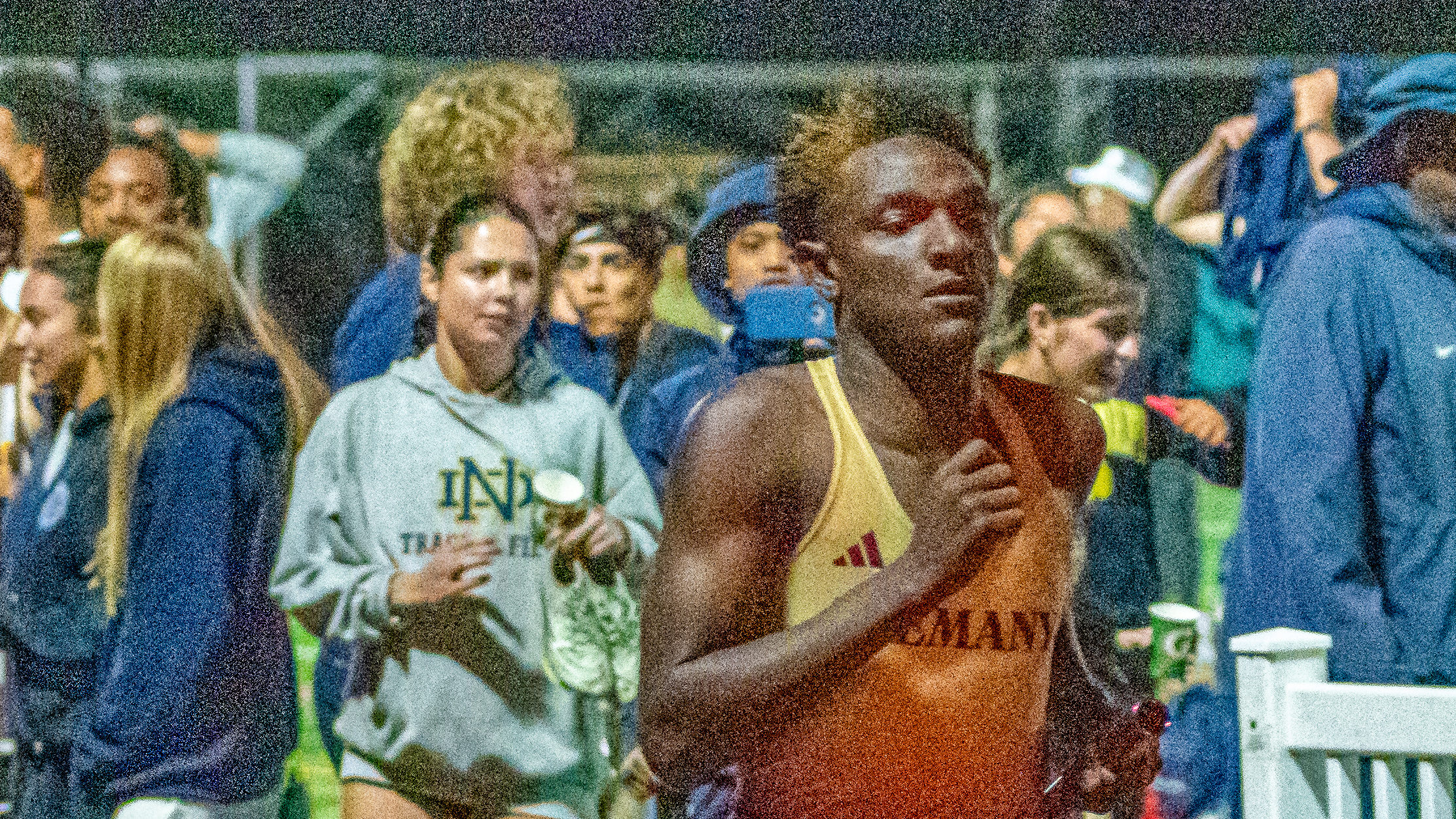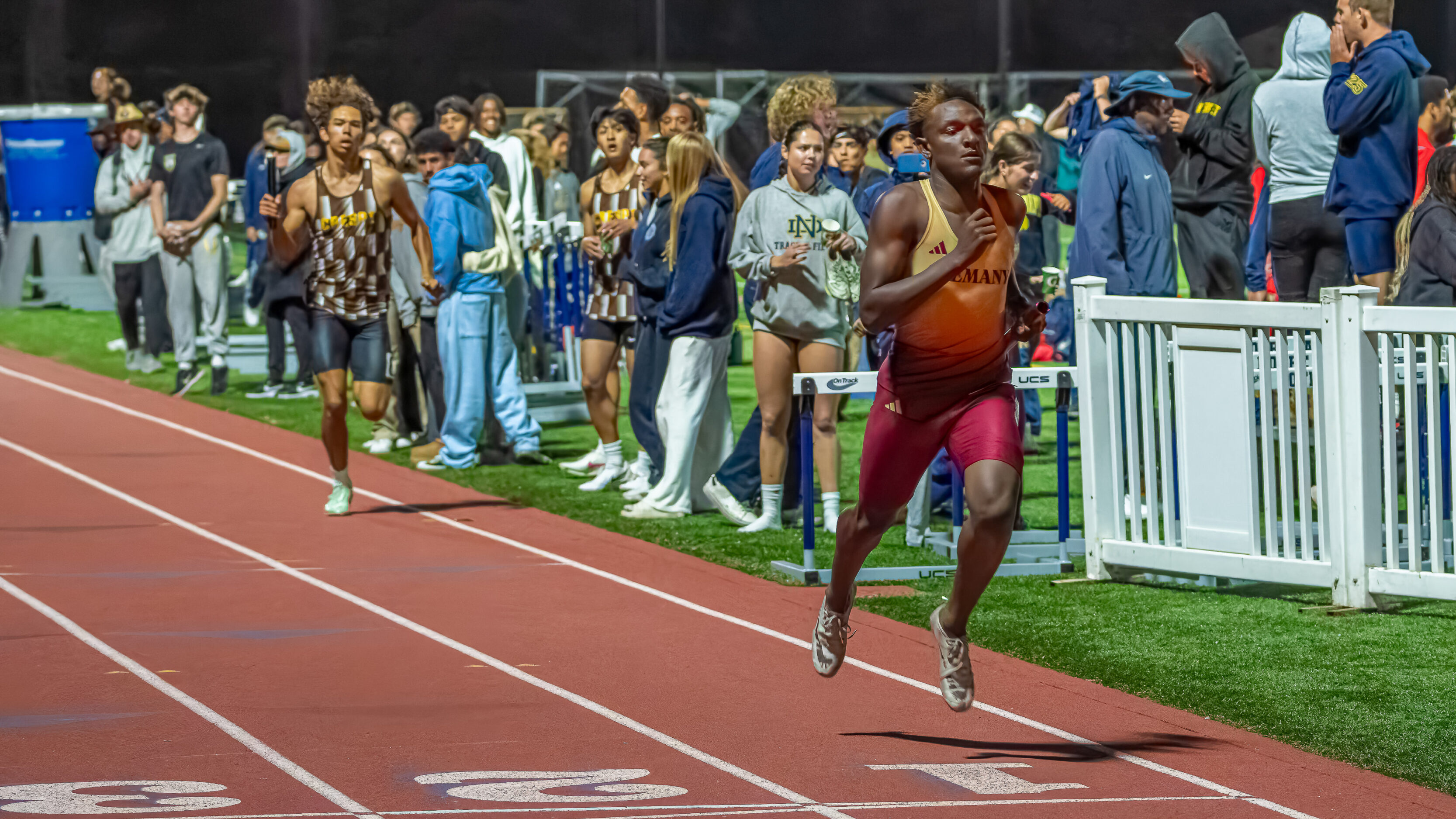
After a conversation with photographer Armando Carrillo at the Mission League Finals, I decided to take another look at eliminating noise in photos. Armando is in charge of media and the official photographer for Bishop Alemany High School, and he’s incredibly talented. Please take a moment to go look at his work at The Chuch Photos.
We spent much of our time talking shop with Dylan Stewart, another regular contributor to PrepCalTrack, but we had a few moments of one-on-one conversation as night began to creep onto the Notre Dame High School track. In those moments, the conversation drifted toward lens brightness. I didn’t bring my f/2.8 70-180mm lens. I didn’t expect the event to go as long as it did. I only had my new Sigma 60-600MM DG DN OS Sports lens, which is not as bright. Its f-stop range is f/4.5-6.3.
Some Photography Definitions
F-stop is one of those photography things that can be confusing at first. A lower f-stop equates to a brighter lens. The aperture, the hole in the lens that lets in light, is larger on smaller numbers and smaller on higher numbers. So,an f/2.8 lens has a larger aperture opening and lets in more light than an f/4.5. When it gets darker, a camera with a higher f-stop must also resort to a higher ISO.
ISO is a camera’s sensitivity to light, and it’s a key part of photography’s exposure triangle, along with aperture and shutter speed. A higher ISO number means the camera is more sensitive to light and can capture more light, but it can also lead to grainier or “noisy” photos. So, as we talked bout noise, I asked Armando if he was using any of the new AI-enhanced noise reduction tools like Topaz Denoise AI or DxO PureRAW 4. He was not, and I may have gotten a bit giddy when describing their performance. I love sharing great technology with others.
Eliminating Noise – A Comparison
That brings me here. I decided to take one of my final photos from the night, shown at the top of this post, to illustrate what both Topaz Denoise AI and DxO PureRAW 4 could do with a real-world file. I demonstrated these tools in a quick Denoise test a few weeks ago. These examples should be a more dramatic illustration. Below are two examples using the built-in, slider-based noise tools in Adobe Lightroom and the latest AI-enabled update from DxO.


In our conversation, Armando indicated that he just used the built-in noise reduction in Adobe Lightroom. And, he was disappointed in how “soft” it made the photos feel. Traditional digital noise reduction often results in the elimination of detail in addition to noise. So, while the nose is improved in the image above, you’re still left with artifacts, and you can see the softness Armando was lamenting. Now, look at the comparison below.


As you can see, the DxO PureRAW 4 result contains almost no digital artifacts. In addition, color, detail, and contrast have been retained or enhanced. Yes, it does take more time to run this on each of the selected RAW images, but as chip speeds continue to improve, so will processing speeds. It may be easier to see the difference in the comparison below. This compares slider-based noise reduction in Adobe Lightroom and AI-enhanced noise reduction in DxO PureRAW 4.


It should be noted that Adobe has released upgraded AI-enhanced noise reduction as an option. My experience today is that it takes longer and delivers lower quality than either Topaz Denoise AI or DxO PureRAW 4. However, I am willing to bet that will not be the case for long. Here is the full edited image of Demare Dezeurn completing the final leg of the 4x400M relay.

Thanks for the great conversation, Armando. 🙂
100% OF PROFITS FROM PHOTO SALES ARE DONATED TO YOUTH TRACK & FIELD PROGRAMS!
EXIF Data Below Applies Only To The Featured Photo In This Post
Have you also looked at Topaz Sharpen?
Ira, I have, but not the most recent version. I’ve always felt it had a tendency to oversharpen. I have all of the Topaz products, however, so I’ll try again at your recommendation.